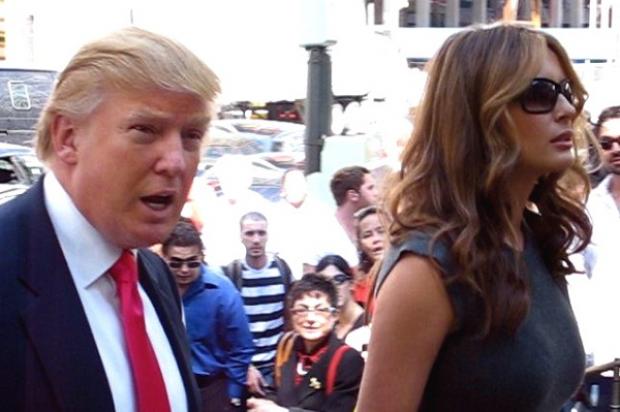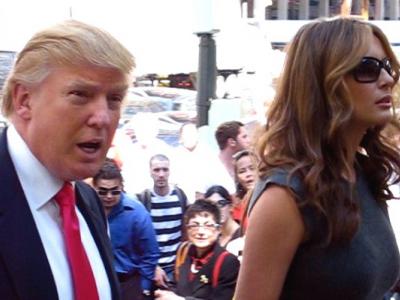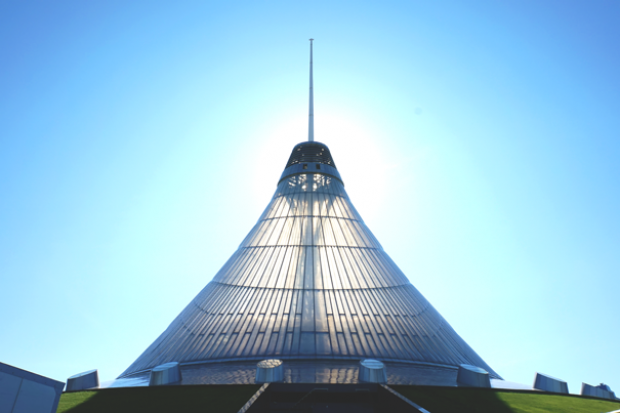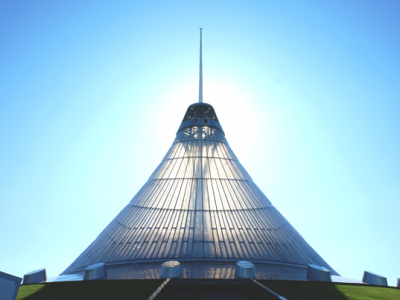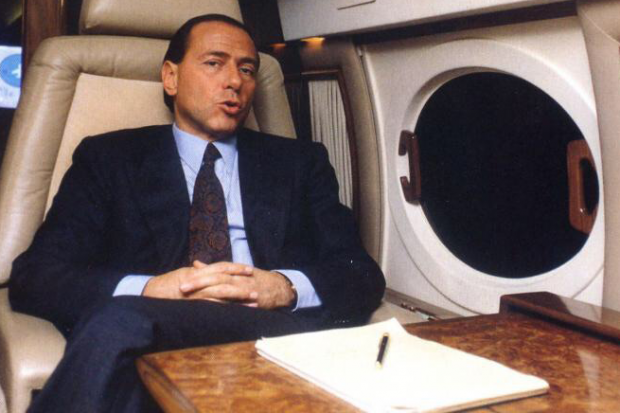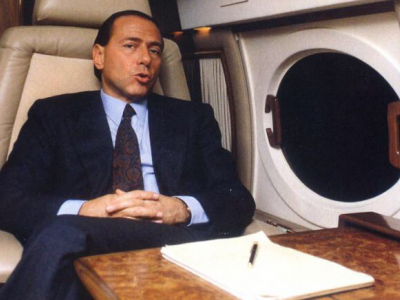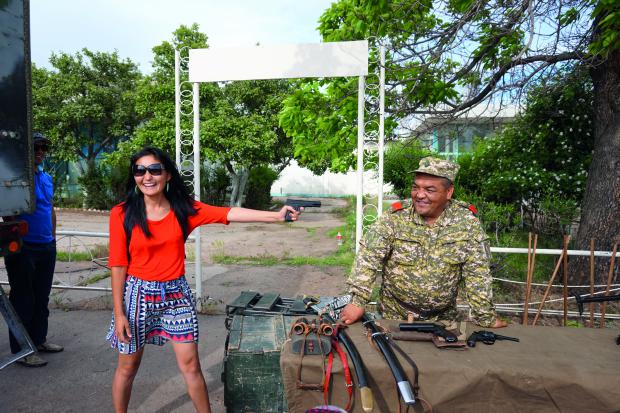What Donald Trump's plastic Versailles tells us about the president elect
The world had 18 months to get used to Donald Trump, before the shock of the election result; it turns out what we weren’t ready for was his apartment. Just days after winning, the president-elect and his would-be British middleman, Nigel Farage, stood beaming together in Trump’s private elevator – a lift so gold, so garish, so glaring, that it could have come with an epilepsy warning. The internet shielded its eyes and began to get the picture.
Mr Trump is now negotiating to spend his weekends at home in New York, rather than at the White House. Apparently the electoral college has elected not just the man, but the whole shebang: the $100m penthouse (everything in his world is preceded by its price), the gold elevator, and the $80m private jet that will ferry him back and forth, whose fittings – down to seatbelt buckles and recline buttons on the seats – are 24k gold plate.
It’s easy enough to look up Trump’s home on the internet. There’s even a video of contestants on The Apprentice being shown gasping from room to room, and told that if they manage to get to the top they too could live like this. “Or maybe even better!”
"A million gilded reflections"
It’s not just the bling – it goes way beyond that. It begins with Trump Tower itself, the squared-off monolith that’s like a steel and plate-glass alter ego. Out of the lift, you go through two gigantic – and one suspects totally bomb-proof – golden doors. The interior is furnished in what have been referred to as “warm neutrals”: gold, more gold – on the furniture, the ceilings, the fittings, the window frames – cream, rose, and, er, gold. There are pillars. There are curved arches, vaults in the lowish ceilings, faux rococo ceiling paintings, elaborate ceiling mouldings surrounding outsized cut-glass chandeliers, and claustrophobically thick carpets underneath. Not a surface is plain. There’s plenty of marble. There are also ornate carvings, over-the-top chairs, glass-and-onyx-topped tables with curling sweet dishes holding ordinary wrapped chocolates, statuettes of cherubs and lovers – all gold. The soft furnishings all look the same and all blend into the background, making the gold even more noticeable.
Spaces like Trump’s office are a bit more bland. The plate-glass meets an eggshell-painted and surprisingly office-y wall that even has some sort of workaday grill in it. About eight inches away from this, however, crammed in on the other side of a sharp corner, is what looks like an awkward copy of Renoir’s La Loge, in a frame even more carved, heavy, and gold than the one on the original, at the Courtauld Gallery in London.
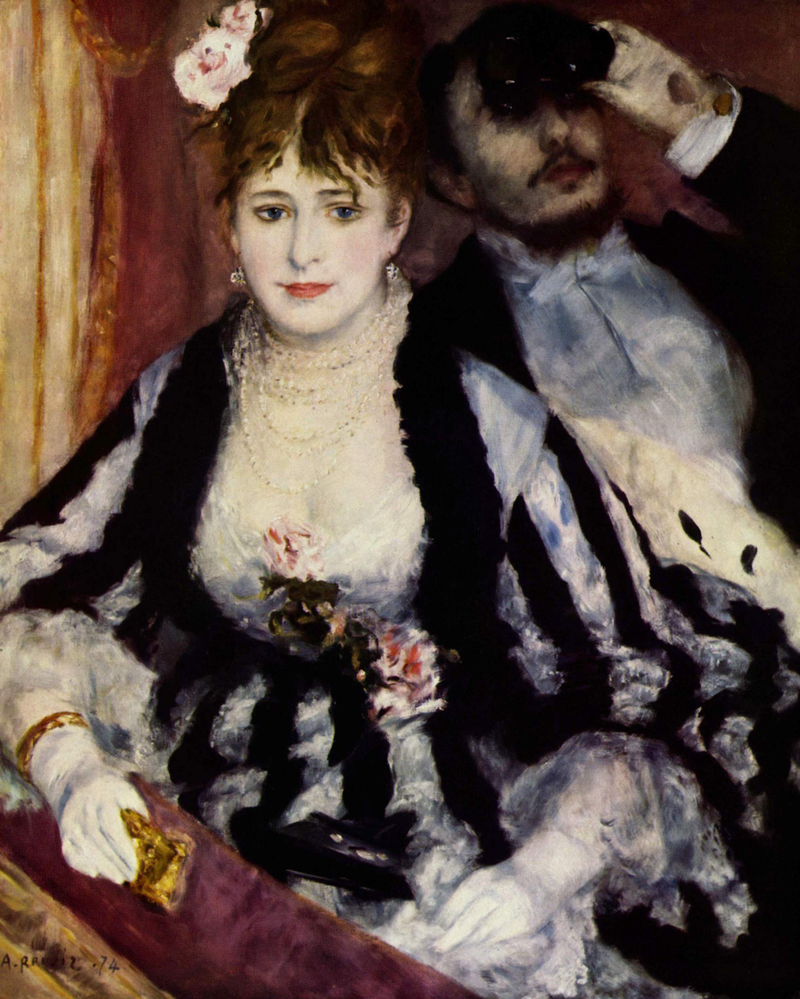
Well, you say. The rich have always been like this. Beauty, art, gold – these have always been how power is made visible. This goes back as far as human history. Europe would hardly be Europe without the palazzos and art collections of the Medicis, for a start. And think of all those Old Masters, humble biblical scenes with the rich family kneeling in the corner of them, in their best clothes. It’s a little bit trashy, after all.
Trump’s interior décor is modelled on Versailles, a palace that has an awful lot to answer for. The three Louis set the “gold standard” in chair design, ceilings, and the idea that too much is never enough. Versailles – commanding its vistas as Trump Tower does its own, though Trump doesn’t actually own all of Manhattan – is another soaring building, with its enormous rooms and endless halls, its rows of tall windows, ceilings two normal storeys high. Its visual effects both befit and reference the man who had it built: Louis XIV, the Sun King. It’s about light. Louis scaled new heights of conspicuous consumption – demanding, commissioning and displaying the most beautiful of everything in a light-filled palace that was also a theatre. The divinely appointed King harnessed beauty, the idea of beauty, into an expression of his power.
Versailles became the most potent symbol of the power of the French monarchy, culminating in the hollowed-out ostentation of Louis XVI and Marie Antoinette – but amid the ritual shows of protocol in which every line was already scripted, even she yearned for something smaller; even she had her milkmaid fantasies.
In the same breath as Trump, people are talking about the Romanov palaces, and Catherine the Great’s Versailles-inspired palace at Tsarskoe Selo. The Rev Richard Coles, radio personality and erstwhile pop star, says it's “bringing out the Quaker” in him: “It’s that dictator's boudoir aesthetic, a million gilded reflections to keep the narcissist happy.”
The homes of narcissists
A quick look at dictator’s boudoirs – both online and in Peter York’s seminal book, Dictators’ Homes (now sadly out of print, but surely due a reissue?) – yields the surprising fact that very few dictators can keep up with Donald Trump for sheer bling. Few of them can even keep up with him in ugliness, and those that manage both boil down to only a small handful. Except for his own private gold elevator, barrelling from the Berghof straight up through the mountain itself to his lodge at the top, even Hitler went for a more ascetic, folkloric style. Mussolini had the real thing – an Italian Renaissance villa. And Tito lived the American suburban dream. In his introduction, York cites “Outsider entrepreneurs”, including oligarchs, plutocrats and others in this category.
Donald Trump’s penthouse is, on a smaller scale, even more gold than Versailles. But it is jarring and crowded; the eye has nowhere to rest, it looks too uncomfortable even to sit and have a talk. The style is in a battle to the death with the building’s plate glass and square construction, its oppressive, hulking ceilings, its lack of scale – it feels like a place to pretend to be alive in. As the Irish poet Mark Granier put it: “a golden tomb.”
By contrast, the homes of former US presidents like Reagan and GW Bush are simply very comfortable, easy on the eye, large, well-appointed homes, recognisably in the vernacular style of the American ranch house. They are authentically themselves, their houses (even professionally decorated) grow out of their roots, and, aside from some nice linens and so on, they utterly lack what York calls “the Wow factor”.
Over the top as they were, most of the eighteenth century palaces were aiming for beauty, even as they prostituted it to power. The beauty itself was the status symbol. In the long age of handmade things – before mass production and plastic literally cheapened the Versailles style – the only way to have a lovely clockwork toy, a beautiful upholstered chair, a delicate jewellery box, was to be able to afford both the materials and the making. Even Henry VIII didn’t have access to all that sheer gloriousness. Catherine the Great’s power – and legacy – was to take the lesson of Versailles and apply it in a Russian style. It symbolised culture and civilisation; it was her dream for Russia. The onyx and agate may be a bit much for us now, but her palace contains genuinely lovely, coherent rooms. There is a sense of colour at work. There’s proportion. There’s a conversation.
The anti-Palais de Versailles
Our current class of dictators, oligarchs, sports stars, and alt-right radio hosts don't give a toss about these kinds of refinements. It's just BLING BLING BLING. The Trump apartment is not intended to be comfortable. Badly proportioned, stuffed wall-to-wall with ugly things (including the walls) and nothing restful or interesting to look at. No master artist sat in a workshop, being paid well to make something delightful for this place. Aping something like the form but not the function of the idea of Bourbon style, Trump’s apartment is actually more like an anti-Versailles. It’s the difference between patronage as power and power as power. It's the triumph of a kind of deadness which shows itself in every other thing Trump does; its glitziness is exactly as barren as Damien Hirst’s diamante encrusted skulls, or paintings made out of real butterflies.
Trump needs us to see his house because it, and his jet, personify him
Aristotle wrote in his Nicomachean Ethics, “Virtue aims for beauty”. Unpacking this comment could take a whole essay, but it is clear that reality TV has not fostered our best qualities, as a culture. Reality TV is light on empathy. It divides, it mocks and deliberately traumatises participants to raise a laugh. It prefers the dysfunctional, and preys on the vulnerable. When living in the Big Brother house, or taking part in challenges on The Apprentice, the one thing you are not allowed to be is authentic. There is no virtue here, only sensation for the sake of it.
Writing in 2005, Peter York wrote that “the seriously rich and important have never been anything like as keen to show us their houses as the moderately rich”. But Donald Trump is a new kind of rich and important. He needs us to see his house because it, and his jet, personify him. He is the product of his own ego, magnified and given a kind of public credibility by reality TV. His whole life is a hall of mirrors, and everything he has made is, literally, a commercial for himself. And that’s before you get to the corruption and fraud charges, the unpaid suppliers, the allegations of rape and intimidation, and all the rest.
In short, it is one thing to build a Versailles during the age of the divine right of kings (and by the same token it’s right for that palace now to be a museum); and it’s another thing altogether to build a gold encrusted Trump Tower within a democracy. At the time of writing, the president-elect is using the language of The Apprentice to describe choosing his team of advisors, and asking to be allowed to continue to live in his self-created world even as the serving President.
The White House is everything Trump Towers is not. It is first and foremost a historical building. It embodies all the most important principles and ideals of American democracy, principles that were laid out by dissenters, radicals and scientists like Thomas Paine, Thomas Jefferson and Benjamin Franklin - and it has the décor to match. Well-appointed as it is, there is more than a hint of Quaker, as Rev Coles put it, in the White House. Civil servants are not obsequious reality TV wannabes. With a bit of luck, having to spend even five days in this ultimately authentic environment, working in a public service role with people who by law aren’t there just to kowtow to him, may turn out to be the making of Donald Trump. Or he may, you know, just melt.

